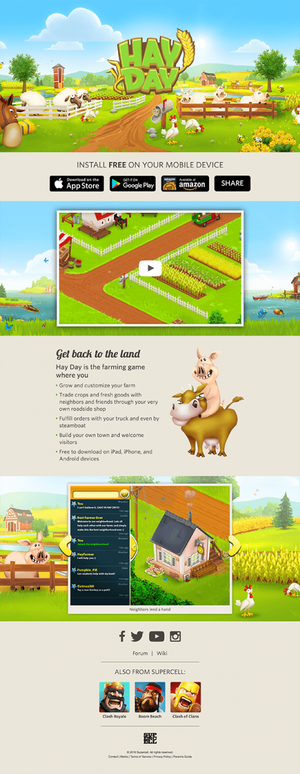
You’re getting ready to launch your next game and you want to know how much you should be prepared to spend on marketing. This article breaks down about what that’s going to be in terms of your own time, and outsourcing costs.
So, what’s the magic number?
It costs about $50,000 to market an indie game.
Now that we’ve opened that can of worms (and now that you know why indie game developers often partner with publishers), let’s actually break it down so that you can see how I came up with it.
In short, I’m multiplying the average value of an indie game developer’s time by the average time it takes to do a specific set of marketing tasks over 3 months leading up to the launch of their game.
And I’m also averaging a market range for individual marketing projects based on my career experience.
The big idea here is that the $50,000 number (and its addends), although fuzzy, provide insight as a clue for how valuable marketing might be in relation to your own time, how valuable it might be when considering a publisher, or how valuable it might be when outsourcing.
But before we start calculating projects, I’ll explain my assumptions, so that you understand exactly where I’m coming from.
Please bear with me.
What Is an Indie Game Developer?
The first assumption I’m making is that an indie game developer is an independent games developer, meaning they’re doing it all themselves. Just like indie movies, indie music, or indie books, they’re entertainment businesses who not only create their own products (games), they also sell them.
Indie game developers aren’t just game developers, and they’re not just game publishers – they’re both.
Indie game developers are a group comprised of sole-proprietors, small teams working virtually or out of houses, and small brick-and-mortar companies such as Supercell, who all sell games alongside one another in what’s known as the games industry.
In other words, an indie game developer isn’t merely a person, but rather a business, even if that business only employs one person.

Not what indie game developers look like.
This is an assumption based on the standard of business as defined by the U.S. government, and far more importantly (for the purposes of this article) the standard accepted by the games industry.
This article is for indie games businesses, not indie game hobbyists.
So if you’re interested in what marketing might cost in time or money given the standard of the games industry, then read on.
An Indie Game Developer’s Time is Valuable Regardless of Their Earnings
The second assumption I’m making is that the average value of an indie game developer’s time is only useful for the purposes of this article if it’s based on the average salary of a game programmer in the U.S., and by factoring in the added value of someone who’s running a games business.
The objection to this is typically that some indie game developers make less revenue than others, and so it’s imprecise (or unfair) to measure the less fortunate by this standard.
But the primary problem with that is, it doesn’t change expenses.
Marketing, advertising, and PR agencies aren’t going to charge you any different, publishers won’t take less of your revenue, and marketplaces certainly aren’t going to treat you differently.
An indie game developer’s time has an average games industry value (or market rate) regardless of their earnings.
Remember, the point of this article is to provide an aspiring indie games business insight as a clue to what their marketing efforts might be worth in relation to their own time or money.
If you don’t accept that your time has an average market value given your earnings, then you’re going to pass out cold when we start calculating how much it might cost to outsource your marketing.
But for those of you who accept these assumptions as reasonable, let’s do some fuzzy math!
How Much Is an Indie Game Developer’s Time Worth?
Here’s the equation I’m using to calculate the average value of an indie game developer’s hourly rate:
(Average salary of a game programmer in the U.S. + Average salary of a game business manager in the U.S.) / 2 * The true cost of an employee / Business hours in a year = Average hourly value of an indie game developer
Alright, let’s go through each of these…
The average salary of a game programmer in the U.S. is $93,251 in the Gamasutra Game Developer Survey 2014, $90,141 on Salary.com (Applications Systems Programmer III), and $73,929 on Glassdoor.
The average salary of a game programmer in the U.S. is $85,774.
And the average salaries of a games business manager in the U.S. is $101,572 in the Gamasutra Game Developer Survey 2014, $116,796 on Salary.com (Business Development Manager), and $81,221 on Glassdoor.
The average salary of a games business manager in games in the U.S. is $99,863.
And the average of those salaries shows that the average salary value of an indie game developer in the U.S. is $92,819.

Cha-ching!
Now, since an indie game developer owns their own business, they’re responsible for all their own expenses, taxes, benefits, and perks. And because of that we have to factor in that the true cost of an employee is 1.5-2.5x their salary.
I’ll use the average of 2x, which doubles the true value of an indie game developer’s salary to $185,638.
Finally, to find the (freelance) hourly value, I’m dividing by 2080, the number of business hours in a year, to arrive at $89.
The average value of an indie game developer’s hour in the U.S. is $89.
But here’s the problem with that.
This method of calculating value is called cost-plus pricing, and doesn’t take into account the true value of a purchase (or value-based pricing).
Basically, averages don’t take into account that the true value of a service is really only what someone is willing to pay for it. For example, you’d pay more for a shovel in a blizzard than you would in the summer.
Oh, well. I’m not going to account for that kind of value here.
The purpose of this exercise is to give you a good enough idea of what your marketing might be worth, fundamentally-speaking, for the 3 months leading up to your game’s launch. And not to be scientifically accurate about that as it relates to your specific business goals, problems, risks, or personal attitude about it.
It’s up to you to factor in true value. But be careful, as market values don’t change just because you don’t value marketing the way the industry does.
Let’s talk about what a foundational indie game marketing plan typically looks like.
Pricing a Foundational Indie Game Marketing Plan
All indie games do at least these 6 marketing projects prior to launch: Branding, trailer, website, social media, devblog, and PR.
Pretty much in that order, too.
Granted, there’s countless other game marketing tactics that could be used for your games, we’re going to stop there for the sake of brevity.
To keep things nice and fuzzy, I’m going to round up and use nice, big fat numbers with zeros on the ends. And because that’s how vendors are going to price your projects when outsourcing anyway.
1. Branding
Branding, or brand identity, is your game’s logo mark, colors, font choices, typography, patterns, key art, and any special character/environment art. Each game requires more or less of these elements.
The time it takes to finalize branding elements is typically 2 weeks considering revisions, variations, and additions over time. Not to mention time putting together your press kit or style guide if you use one.
Branding takes about 2 weeks to complete, it will cost you about $7,000 to do yourself, or about that to outsource.
I know, your knee-jerk reaction is probably something like… WHAT?! I can do that in way less than 2 weeks!
And I totally get it. Consider that until you’ve tracked your time down to the hour on all these projects, it may only seem as if you’re doing it quicker, when in reality it’s actually taking longer than you think.
2. Trailer
Crafting a great trailer takes a lot of careful work and consideration. It takes planning, narrative, capturing the right footage, effects, animations, sound design – it’s just not something you can pop open iMovie and push out within a day. A good, solid trailer takes about a week to produce.
A trailer takes about 1 week to produce, costs you about $4,000 to do yourself, and maybe less to outsource.
My friend and colleague, M. Joshua Cauller, makes indie game trailers such as this one for Dimension Drive.
Professional trailers typically take more than a week to make. But I’m cutting some slack for a less experienced indie game developer who hammers one out relatively fast with a good enough end result.
3. Website
This is where things start to get hairy, because honestly there’s a hundred different ways to build a website.
I’m going to assume you’re rolling your own hosting for $10 a month, you did a WordPress install for free, and you’re customizing some $50 theme. This is the most common scenario.
A website takes about 2 weeks to complete, costs you about $7,000 to do yourself, and maybe less to outsource.
Two weeks is pretty standard. Also, consider that over time you’ll be adding or redesigning pages, messing with plugins, tweaking SEO, integrating tools, cutting custom graphics and so on.

The official website for Hay Day. See, you don’t need a big website.
To significantly cut down on the cost of making an official game website, use my guide to making effective game websites really fast. In fact, it should cut your cost down to about $1,000.
4. Social Media
Social media means signing up for, creating profiles on, and leveraging a hundred, free social networks. Getting on these networks is easy and free, but attaining success with social media is not.
In order to be truly successful on social you’ll do at least 2 hours a day of content creation, engagement, and optimizations. And yes, even on weekends (spend 1 day a week batching most of th





































